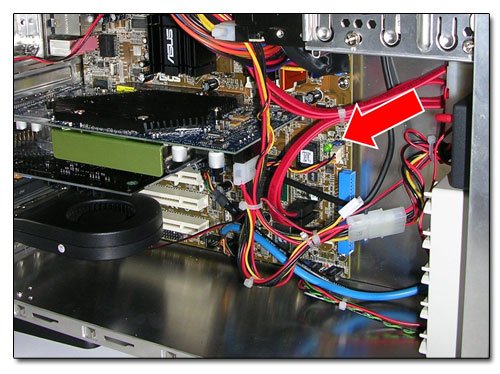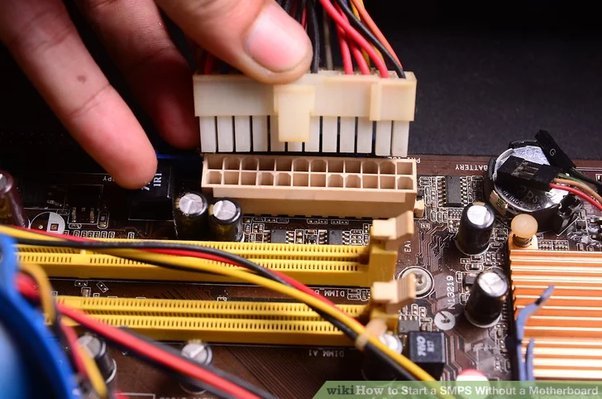Motherboard light on but no power up indicates potential issues with power supply, connections, overheating, RAM, or motherboard faults. Troubleshooting involves testing PSU, checking connections, assessing cooling, reseating RAM, inspecting the motherboard, and seeking professional help if necessary.
Table of Contents
Introduction:
In the intricate realm of computer hardware, encountering issues with powering up your system despite the motherboard’s light being on can be a perplexing ordeal. This guide aims to serve as your roadmap through the troubleshooting process, offering comprehensive insights and practical solutions to resolve the issue efficiently and effectively.
Understanding the Problem:

When you observe that the light on your motherboard is illuminated, it signifies that the motherboard is receiving power from the PSU (Power Supply Unit). However, if your system remains unresponsive and fails to power up, despite this indication, various underlying factors could be contributing to the problem.
Common Causes and Solutions:
Faulty Power Supply:
- Cause: A defective or inadequate power supply can impede the system’s ability to boot up.
- Solution: Begin troubleshooting by testing the PSU’s output voltage using a multimeter. If irregularities are detected, consider replacing the PSU with a new unit or upgrading to a higher wattage model to meet your system’s power demands.
Loose Connections:
- Cause: Loose or improperly connected cables, particularly those linking the PSU to the motherboard and other components, may disrupt the flow of power.
- Solution: Conduct a meticulous examination of all power connections, ensuring they are securely fastened. Pay close attention to the 24-pin motherboard connector, CPU power connector, and GPU power connectors.
Overheating Issues:
- Cause: Excessive heat buildup within components like the CPU or GPU can trigger safety mechanisms that prevent the system from booting up.
- Solution: Assess the airflow and cooling efficiency within your PC case. Ensure that cooling solutions such as fans and heatsinks are functioning optimally and free from dust or debris.
Also Read: Is The Rtx 3060 Ti Compatible With My Motherboard – A Comprehensive Guide!
RAM Issues:
- Cause: Faulty or improperly seated RAM modules can obstruct the system’s boot process.
- Solution: Carefully reseat the RAM modules in their respective slots, ensuring they are firmly inserted. Proceed to test each RAM stick individually to isolate any defective modules.
Motherboard Faults:
- Cause: A damaged or malfunctioning motherboard could be at the root of the issue.
- Solution: Perform a visual inspection of the motherboard for any signs of physical damage, such as burnt components or bulging capacitors. Consider testing the motherboard outside the case to rule out grounding issues.
Additional Tips:

- Clear CMOS: Resetting the CMOS settings can sometimes resolve boot-up issues stemming from BIOS misconfigurations.
- Component Testing: Disconnect non-essential components such as storage drives and peripherals, and attempt to power up the system with only the essential components connected (CPU, RAM, GPU, and PSU).
- Professional Assistance: If troubleshooting efforts prove unsuccessful, seek assistance from a qualified technician or PC repair service to diagnose and rectify the issue effectively.
FAQ’s
1. What does it mean when the motherboard light is on but the system won’t power up?
It indicates that the motherboard is receiving power, but various issues could prevent the system from booting up.
2. How can I test if the power supply is causing the issue?
Use a multimeter to check the PSU’s output voltage for irregularities.
3. What should I do if I find loose connections?
Ensure all power cables are securely fastened, especially the ones connecting the PSU to the motherboard and components.
4. How can overheating affect system boot-up?
Excessive heat can trigger safety mechanisms that prevent the system from powering up.
5. What steps can I take to address overheating issues?
Check airflow and cooling efficiency, clean fans and heatsinks from dust, and ensure proper ventilation.
6. How can faulty RAM modules affect boot-up?
Faulty or improperly seated RAM can obstruct the boot process.
7. How do I troubleshoot RAM issues?
Reseat RAM modules carefully and test each stick individually to identify defective ones.
8. What signs indicate motherboard faults?
Physical damage such as burnt components or bulging capacitors may indicate motherboard issues.
9. How can I reset CMOS settings?
Clear CMOS to reset BIOS configurations, which may resolve boot-up issues.
10. What should I do if basic troubleshooting doesn’t work?
Disconnect non-essential components and seek professional assistance if needed.
11. Why is testing components individually important?
It helps isolate the faulty component causing the boot-up issue.
12. When should I consider seeking professional help?
If DIY troubleshooting fails to resolve the problem, it’s advisable to consult a qualified technician or PC repair service.
Conclusion
Encountering a situation where your motherboard’s light is on, yet your system remains unresponsive can be a source of frustration. However, armed with the knowledge and solutions provided in this guide, you can methodically address potential causes and restore your system’s functionality. Remember to approach troubleshooting with patience and thoroughness, and don’t hesitate to seek professional assistance if needed.